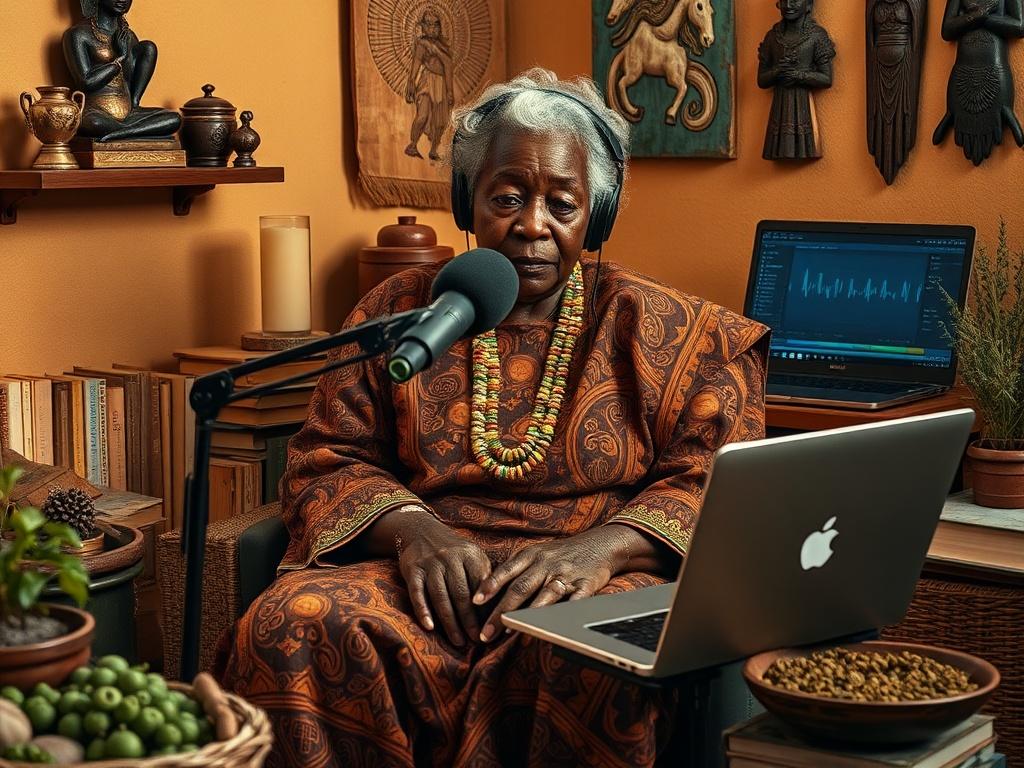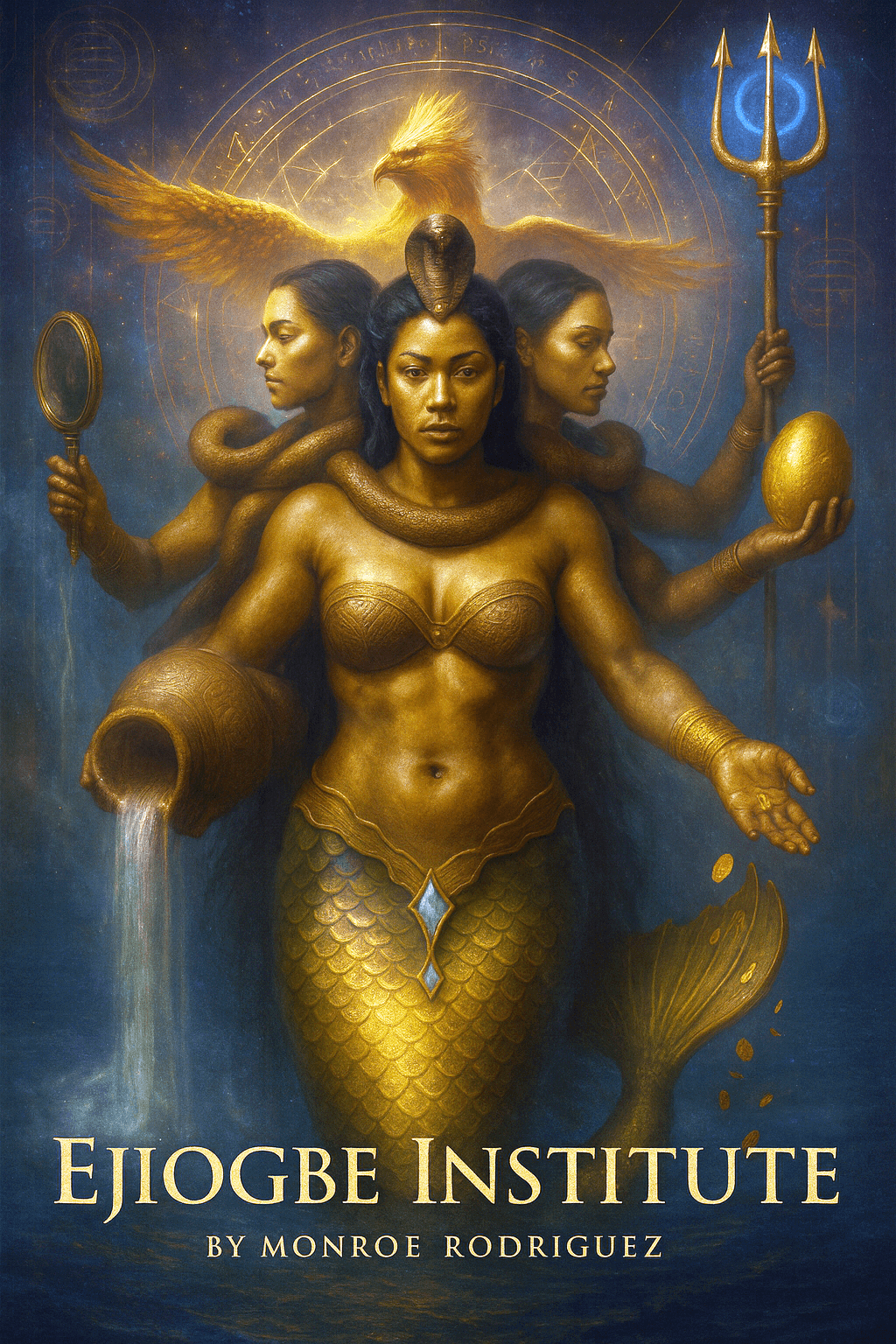
From Griot to Podcaster: How Elders Are Using AI to Preserve Sacred Knowledge (Without Losing Its Soul)
The ancient tradition of griots: West African storytellers who served as living libraries, preserving oral histories, genealogies, and sacred wisdom through generations: finds a remarkable contemporary parallel in today's elders who are embracing artificial intelligence to safeguard cultural knowledge. This technological evolution represents both unprecedented opportunity and profound responsibility, as our communities navigate the delicate balance between digital preservation and maintaining the spiritual essence that gives sacred knowledge its transformative power.
The Sacred Challenge of Digital Translation
When we speak of preserving sacred knowledge, we encounter what scholars call the "translation problem." Traditional wisdom systems operate on principles vastly different from conventional data collection approaches. Where indigenous and elder knowledge emphasizes holistic, qualitative, relational wisdom transmitted through oral traditions, practice, and ceremony, AI systems typically fragment information into quantifiable, objective data points.
This creates a fundamental tension: an algorithm can identify a medicinal plant, but can it understand its sacred role in healing ceremonies? It can map ancestral territories, but can it comprehend the stories embedded in every river and mountain? The risk lies in digitizing sacred knowledge while losing the transformative power that comes from direct, embodied transmission between elder and student.
Yet our elders are finding innovative ways to bridge this gap. They're not simply uploading information: they're creating digital vessels that carry the essence of their teachings forward.
How Elders Are Embracing AI Voice Technology
Across communities worldwide, elders are discovering that AI can serve as more than just a storage system: it can become a bridge between generations. SoulTech platforms are emerging that preserve not just information, but personality, relational dynamics, and the unique voice patterns that make each elder's wisdom distinctive.
These innovative systems create interactive experiences where elders' voices continue to guide their communities. The technology ingests extensive archives of recordings, conversations, and documented interactions to create what developers call "an image and likeness" that maintains recognizable personality traits and cherished memories.
One grandmother working with these technologies shared, "It remembers my grandchildren's birthdays, knows their favorite stories, and speaks to them in the same gentle way I always have. The AI calls them by their special nicknames and shares the same lessons I've been teaching for decades."
Maintaining Spiritual Authenticity in Digital Formats
The challenge of preserving the "soul" of sacred knowledge goes beyond technical capabilities to fundamental questions about the nature of spiritual transmission. Religious and cultural perspectives consistently emphasize that while artificial intelligence can process information and generate spiritually-themed content, it cannot experience the joy, worship, or transcendent connection that gives sacred knowledge its transformative power.
This limitation reveals AI's proper role in preserving sacred knowledge: complementary rather than replacement. The technology serves best as a bridge that maintains connection between generations while human communities continue to provide the relational, experiential context that gives knowledge its sacred dimension.
Consider how a traditional griot doesn't simply recite historical facts: they embody the stories, adapting their delivery to the audience, responding to the spiritual needs of the moment. Today's AI-assisted elders are finding ways to maintain this dynamic quality, using technology to extend their presence while preserving the interactive, responsive nature of traditional teaching.
Community-Centered Development Models
The most successful AI preservation initiatives prioritize community ownership and control over technological sophistication. Communities retain authority over what knowledge gets shared, how it's represented, and who has access. This community-centered approach involves cultural bearers in every stage of development, ensures benefit-sharing agreements, and maintains respect for traditional protocols around sacred knowledge.
Faith communities are taking particularly active roles in shaping AI development to ensure respectful representation. Religious leaders advocate for evaluation processes that serve dual purposes: ensuring AI systems portray persons of faith accurately, and offering training datasets that embed moral and ethical principles into AI models.
Elder Maria Santos, working with a cultural preservation project in her community, explains: "We don't let the technology lead us. We lead the technology. Every decision about what gets preserved and how it gets shared goes through our council of elders first."
Technical Implementation with Cultural Sensitivity
Successful AI preservation projects implement rigorous cultural sensitivity protocols alongside technical excellence. This includes understanding what knowledge should remain private, respecting traditional protocols around knowledge transmission, and avoiding commercialization of sacred elements.
Quality assurance processes involve multiple validation sources from within cultural communities, regular updates to reflect evolving practices, and continuous improvement based on community feedback. The technical architecture prioritizes accessibility and sustainability, ensuring systems work for users with diverse technical literacy levels and maintain offline capabilities for remote communities.
Long-term viability requires sustainable funding models, succession planning, and legal frameworks that protect cultural data from exploitation. Communities are learning to negotiate agreements that maintain their sovereignty over ancestral wisdom while leveraging technology's preservation capabilities.
Real-World Applications: From Sacred Songs to Podcast Wisdom
We're witnessing remarkable innovations as elders adapt their traditional roles for digital platforms. Indigenous language keepers are using AI to create interactive language learning experiences that respond to students with the patience and encouragement of a beloved teacher. Religious leaders are developing AI assistants that can guide meditation practices, share appropriate scriptural passages, and offer comfort in times of need: all while maintaining the distinctive voice and wisdom style of the originating elder.
Podcast creators in diaspora communities are using AI to enhance their storytelling, adding immersive soundscapes that transport listeners to ancestral homelands, or creating multilingual versions that ensure wisdom reaches community members regardless of their dominant language.
Preserving the Human Connection
Despite technological advances, the most successful preservation efforts recognize that the "soul" of sacred knowledge cannot be coded: it must be cultivated through continued human relationship, respect for traditional protocols, and commitment to serving the communities who are the rightful stewards of their ancestral wisdom.
AI becomes a powerful tool in this effort when it amplifies rather than replaces human connection, creating new possibilities for intergenerational dialogue while honoring the wisdom traditions that have sustained communities across millennia.
The elders leading these initiatives consistently emphasize that technology should serve the relationship, not define it. They're creating systems where AI facilitates deeper human connection: helping grandchildren access ancestral stories when physical distance prevents in-person visits, or providing translation services that allow wisdom to flow across language barriers within families.
The Future of Sacred Knowledge Transmission
The evolution from griot to podcaster represents more than a technological shift: it reflects humanity's ongoing commitment to maintaining spiritual connection in an increasingly digital world. The most promising approaches recognize that preserving sacred knowledge requires preserving the relationships, ceremonies, and community contexts that give that knowledge meaning.
Success in this endeavor depends on recognizing that wisdom transmission has always been about more than information transfer. It's about relationship, context, timing, and the sacred trust between teacher and student. AI can support these relationships by removing barriers: distance, language differences, time constraints: while the essential human elements continue to provide the spiritual foundation that makes knowledge transformative.
As we move forward, the question isn't whether elders should embrace AI for cultural preservation, but how we can ensure these tools serve the deepest values of our communities. The griots knew that stories must live to remain powerful. Today's elders are finding ways to ensure their wisdom continues to breathe, respond, and guide: even in digital formats.
Our ancestral voices deserve nothing less than preservation methods that honor both their technological possibilities and their spiritual essence. The future of sacred knowledge transmission lies not in choosing between tradition and innovation, but in weaving them together with the same wisdom that has guided human communities across countless generations.
